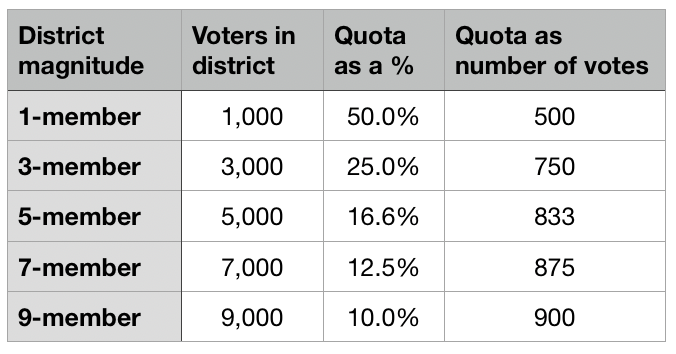Each district should return the same number of members to the representative body because this ensures that each vote has equal value, or equal contribution to electing a candidate. This effect occurs even if each member represents an identical number of electors.
The table below demonstrates this effect, even though the number of voters (or electors) in each district is exactly proportional to the district magnitude. The table shows that a candidate in a 3-member district requires only 750 votes to be elected, compared with 900 votes from a 9-member district.

To eliminate this effect, each district should return the same number of members. If this is not possible, the electoral system design should seek to minimise the variation in the number of members. An example of where variation is required is for the House of Representatives.
